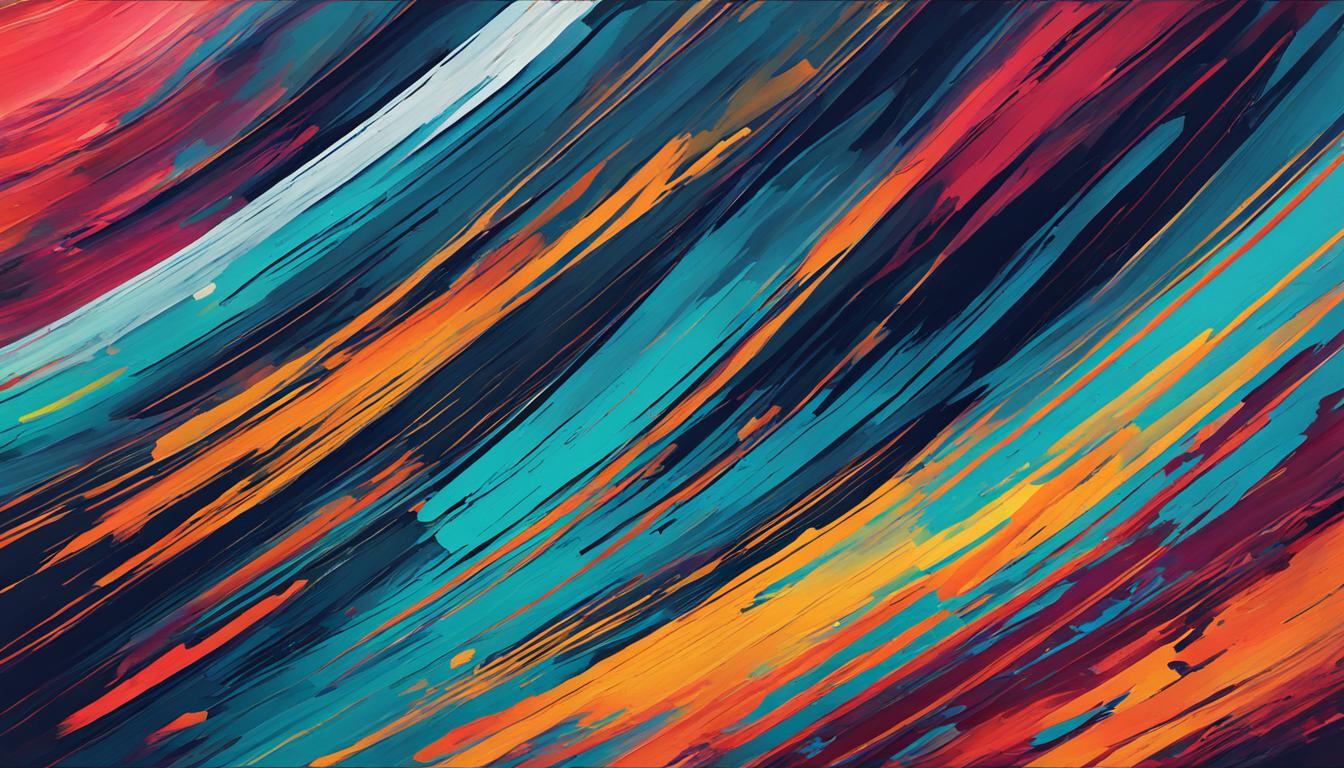 Are you a digital artist looking to add a touch of traditional art to your digital creations? Or perhaps you’re a traditional artist wanting to explore the world of digital art? Blending traditional and digital art techniques allows you to combine the best of both worlds and create artwork that is unique and visually captivating.
Are you a digital artist looking to add a touch of traditional art to your digital creations? Or perhaps you’re a traditional artist wanting to explore the world of digital art? Blending traditional and digital art techniques allows you to combine the best of both worlds and create artwork that is unique and visually captivating.
When it comes to digital art, the possibilities are endless. From digital painting to digital illustration, there is a wide range of tools, software, and techniques to master. However, incorporating traditional art elements into your digital artwork can take your creations to the next level.
Experimenting with different tools and techniques, such as blending traditional painting with digital effects, can add depth, texture, and a sense of craftsmanship to your artwork. By seamlessly integrating traditional and digital workflows, you can achieve a creative fusion that sets your artwork apart.
In this article, I will guide you through the process of blending traditional and digital art techniques, sharing tips, tutorials, and software recommendations along the way. So join me on this creative journey and discover the endless possibilities of combining traditional and digital art.
Key Takeaways:
- Blending traditional and digital art techniques allows you to create unique and visually striking artwork.
- Digital tools and software, such as graphic tablets and Adobe Photoshop, can simulate traditional mediums and enhance your artwork.
- Integrating traditional and digital workflows involves starting with traditional sketching and refining your ideas digitally.
- Enhancing traditional art with digital effects can add depth, highlights, and other visual enhancements to your artwork.
- Experimenting with blending art techniques can lead to exciting and innovative results.
Exploring Traditional and Digital Tools
When it comes to blending traditional and digital art techniques, having the right tools is crucial. By combining traditional art tools with digital resources, artists can unleash their creativity and produce unique and visually striking artwork.
Traditional art tools such as pencils, brushes, and paints offer a tactile and hands-on approach to creating art. They allow artists to experiment with different textures, colors, and techniques. These tools have been used for centuries and provide a rich history and authenticity to artwork.
On the other hand, digital tools have revolutionized the art world, opening up new possibilities and unlimited creative potential. Graphic tablets and pens, such as those offered by Wacom and Huion, provide a seamless transition from traditional techniques to digital art. Artists can draw directly on the tablet, mimicking the feel of traditional drawing, but with the added advantage of digital capabilities.
When it comes to digital painting software, there is a wide range of options available. Software like Adobe Photoshop, Corel Painter, and Procreate offer a plethora of brushes, effects, and tools that can simulate traditional mediums. These digital painting software programs provide artists with the flexibility to experiment, undo mistakes, and make adjustments easily.
By leveraging the strengths of both traditional and digital tools, artists can explore endless creative possibilities. Traditional art tools bring a sense of authenticity and craftsmanship, while digital tools offer convenience, flexibility, and limitless potential.
Integrating Traditional and Digital Workflows
Blending traditional and digital art techniques requires a well-planned workflow. As an artist, I find that combining the strengths of traditional and digital workflows allows me to create artwork that seamlessly combines the best of both worlds.
I start by sketching my ideas using traditional methods like pencil or charcoal on paper. This traditional sketching process allows me to explore different compositions and capture the essence of my subject matter. Once I’m satisfied with my initial sketches, I take the next step in my workflow.

I scan or photograph my traditional sketches and import them into digital software. This step bridges the gap between traditional and digital art, allowing me to refine and enhance my sketches using digital tools and techniques. The digital sketching process offers me the flexibility to make changes, experiment with different color schemes, and explore various possibilities for my artwork.
Once I have a well-defined digital sketch, I move on to the digital painting process. Here, I have the opportunity to incorporate traditional techniques like layering and blending to add texture and depth to my artwork. By using digital brushes that mimic traditional brushes, I can achieve the same organic and tactile feel that traditional painting offers.
The integration of traditional and digital workflows allows me to approach digital painting with the same mindset and techniques as traditional painting. I can build up layers of paint, blend colors seamlessly, and create intricate details just like I would with traditional mediums.
The ability to seamlessly transition between traditional sketching and digital painting is one of the advantages of incorporating both techniques. It offers me the freedom to explore a wide range of artistic possibilities.
By leveraging the strengths of both traditional and digital workflows, I can create artwork that showcases the beauty and depth of traditional techniques while benefiting from the versatility and unlimited potential of digital tools. The final artwork becomes a harmonious fusion of the traditional and digital worlds, capturing the attention of viewers with its unique blend of authenticity and innovation.
Benefits of Integrating Traditional and Digital Workflows:
- Preservation of traditional art skills while embracing digital technology
- Flexibility to experiment with different artistic techniques and styles
- Enhanced efficiency and productivity in the artistic process
- Opportunity to expand artistic capabilities through a diverse range of tools and materials
- The ability to create visually captivating and thought-provoking artwork that stands out in a digital landscape
The integration of traditional and digital workflows allows artists to push the boundaries of their creativity and produce artwork that is truly unique and captivating. By embracing the best of both traditional and digital art techniques, artists can create a visual language that resonates with viewers on a profound level.
Enhancing Traditional Art with Digital Effects
Blending traditional and digital art techniques offers artists a unique advantage—the ability to enhance traditional artwork with digital effects. By incorporating digital textures and overlays, artists can create visually captivating and stunning mixed media artwork that seamlessly combines traditional and digital mediums.
One of the ways digital effects can elevate traditional art is through the addition of digital textures. Artists can overlay digital texture layers onto their traditional paintings to create a sense of depth and dimension. These textures can mimic various traditional art materials like canvas, paper, or even textured brush strokes, enhancing the visual appeal of the artwork.
Another way to enhance traditional art with digital effects is through the use of digital overlays. Artists can strategically place digital elements over their traditional artwork to add highlights, shadows, and other enhancements. These overlays can be used to create dynamic lighting effects, simulate reflections, or even introduce fantastical elements not possible with traditional art alone.
The seamless integration of digital effects into traditional art allows artists to push the boundaries of their creativity and explore new artistic possibilities. By combining the organic and tactile qualities of traditional art with the versatility and precision of digital techniques, artists can create artwork that is both visually engaging and emotionally impactful.
Blending traditional and digital art techniques gives artists the power to transform their traditional artwork into captivating mixed media pieces. The use of digital effects, textures, and overlays adds an extra layer of depth and visual interest, pushing the boundaries of artistic expression.
Check out this stunning example of how digital effects can enhance traditional art:
Comparing Traditional and Digital Effects in Art
| Traditional Art | Digital Effects |
|---|---|
| Requires physical materials | Provides limitless options for experimentation |
| Offers tactile engagement | Allows for precise control and manipulation |
| Subject to permanence | Can be easily modified and edited |
| Limited to physical dimensions | Offers scalability and flexibility in size |
| Relies on natural lighting | Enables creation of dynamic and artificial lighting |
The table above compares the advantages of traditional art and digital effects in terms of materials, control, flexibility, and lighting. While traditional art possesses its own unique charm, the incorporation of digital effects provides artists with endless creative possibilities.
By embracing the fusion of traditional and digital art, artists can create breathtaking works that transcend the limitations of both mediums. The combination of digital effects, textures, and overlays with traditional art techniques opens up a world of artistic expression that is both innovative and visually captivating.
Conclusion
Blending art techniques is a creative fusion of traditional and digital art that results in unique and visually striking artwork. By combining the strengths of traditional and digital tools, artists can push the boundaries of their creativity and create artwork that stands out.
Whether you’re a traditional artist looking to incorporate digital techniques or a digital artist seeking to add traditional elements, experimenting with blending art techniques can lead to exciting and innovative results. It’s a journey of exploration and discovery as you merge the timeless beauty of traditional art with the endless possibilities offered by digital mediums.
So, grab your brushes and tablets and immerse yourself in the world of blending art techniques. Embrace the rich palette of traditional mediums and the versatility of digital tools. With this creative fusion, you can unlock a whole new level of artistic expression and create artwork that truly embodies your unique style.
FAQ
How can blending traditional and digital art techniques enhance my artwork?
Blending traditional and digital art techniques can enhance the distinctiveness of your style and lead to unique and striking artwork.
What tools are needed for blending traditional and digital art techniques?
Artists can use a combination of traditional art tools such as pencils, brushes, and paints alongside digital tools like graphic tablets and software.
What digital painting software is recommended for blending traditional and digital art techniques?
Adobe Photoshop and Procreate are popular choices of digital painting software that offer a wide range of brushes and effects to simulate traditional mediums.
How can I blend traditional and digital workflows?
Artists can start by sketching their ideas using traditional methods, which can then be imported into digital software for further refinement. During the digital painting process, artists can incorporate traditional techniques like layering and blending to add texture and depth to their artwork.
What are the benefits of blending traditional and digital art techniques?
By seamlessly integrating traditional and digital tools and workflows, artists can create artwork that combines the best of both worlds and push the boundaries of their creativity. It allows for the enhancement of traditional artwork with digital effects and the creation of captivating mixed media artwork.
Are there any recommended digital effects or overlays for enhancing traditional art?
Artists can add digital textures and overlays to traditional paintings to create unique visual effects. These digital elements can be used to add depth, highlights, and other enhancements to the traditional artwork.
How can blending traditional and digital art techniques benefit artists?
Blending traditional and digital art techniques allows artists to explore new possibilities and create artwork that is both unique and visually striking. It enables traditional artists to incorporate digital techniques and digital artists to add traditional elements, leading to exciting and innovative results.
